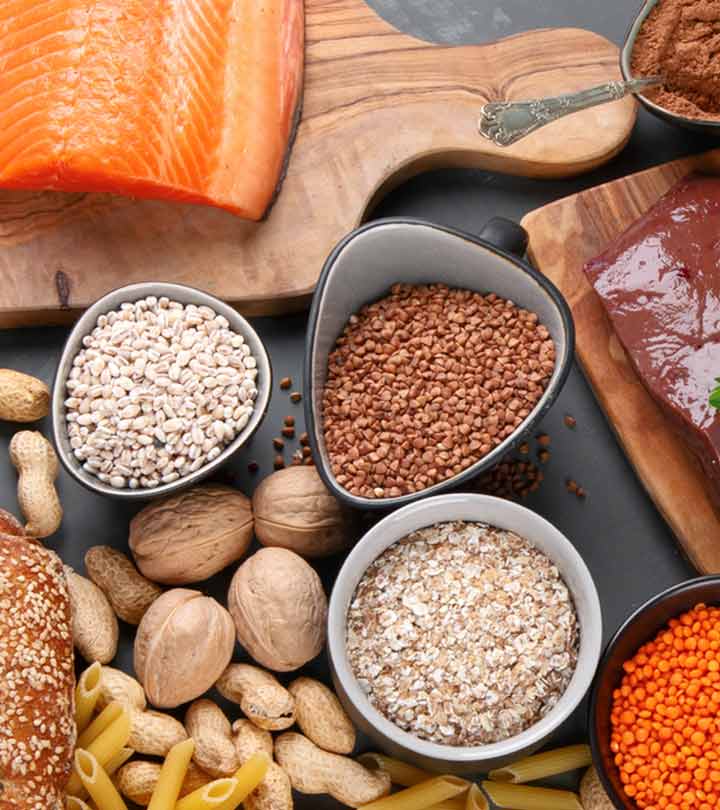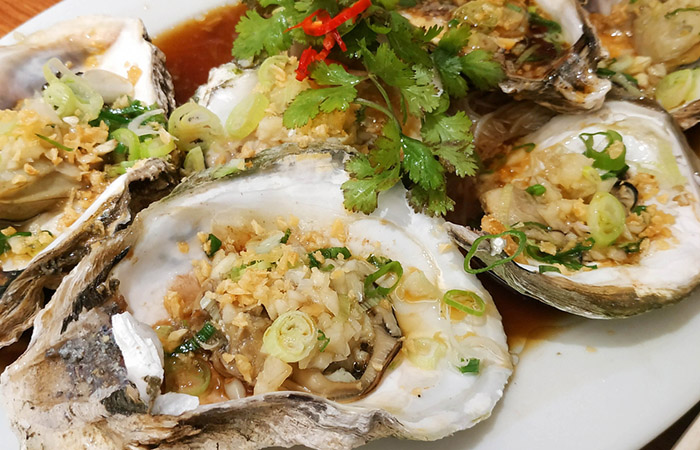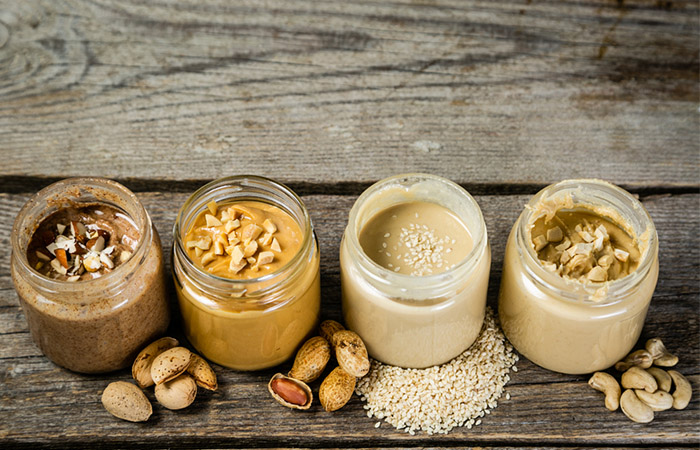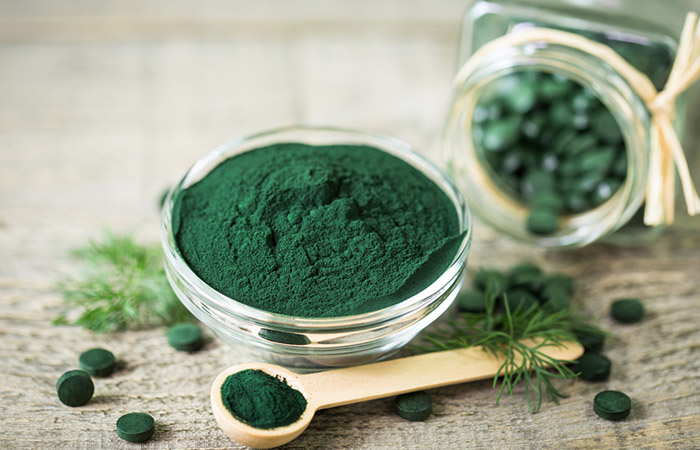
20 Best Foods High In Copper And Their Health Benefits
20 Best Foods High In Copper And Their Health Benefits
It’s time to load up on lobster, seeds, nuts, dark chocolate, and more!

Image: Shutterstock
Copper is an important dietary mineral that plays a key role in performing bodily functions. It is needed by your body in trace amounts and is vital for maintaining optimal health. Many foods are high in copper, and it is a readily available mineral. Foods including wide variety of fruits, vegetables, and meat can offer copper. This mineral helps support brain health, improves immune system function, promotes energy levels, and helps in red blood cell production. This article explores the foods rich in copper and their benefits. Keep reading to know what foods have copper.
In This Article
Foods High In Copper
1. Oysters
Oysters are saltwater shellfish that are highly nutritious. Cooked oysters have exceptional amounts of copper. While oysters are available in various types, the Eastern oysters are the richest in copper. These copper-containing foods contain 4,800 micrograms of copper per every 100-gram serving (1). Oysters are also a good source of omega-3 fatty acids that help keep the heart healthy and may help lower the risk of type 2 diabetes (2), (3), (4).
Note: Don’t consume raw oysters as they can cause infections in humans (5).
2. Lobsters
Lobsters are large, muscular shellfish that also is expensive. They are rich in copper and also contain protein, vitamin B12, zinc, and selenium. They are low in saturated fat but very high in cholesterol. They contain 2.8 mg of copper per every 145-gram serving (6).
3. Organ Meat
Organ meat is a rich source of copper. Beef liver is considered extremely nutritious and is one of the richest dietary sources of copper. Other copper-rich meat sources like calf and chicken livers are also good sources of copper. They also provide many other nutrients like folate, iron, vitamin A, and vitamin B12. Organ meat contains about 10.1 mg of copper per slice (7).
4. Seeds And Nuts
Many seeds and nuts are rich in copper. Copper-rich seeds like Sesame seeds are high in fiber, fats, and protein. They contain 5.9 mg of copper per 1 cup (8). In addition, you can consume copper-rich nuts like cashew nuts that contain 0.6 mg of copper per ounce (28 g) (9). You can eat cashews raw, add them to hot and cold dishes alike, or soak them overnight to use as a base for dairy-free spreads, cheeses, and dips. Almonds also are high in copper. Dry, roasted almonds (without salt) contain 1.6 mg of copper per serving (one cup) (10).
5. Dark Chocolate
Dark chocolate is packed with nutrients, antioxidants, and fiber. It is known to improve cardiovascular health and may help reduce cholesterol levels (11), (12), (13). However, dark chocolate is also high in calories and must be consumed in moderation. One bar of dark chocolate contains 1.8 mg of copper (14).
6. Shiitake mushrooms
Shiitake mushrooms have been used in traditional medicine. It is one of the best copper-rich foods you can include in your diet. These edible mushrooms are the most popular type around the world. They are packed with many health-boosting properties and are rich in texture and flavor. 100 grams of shiitake mushrooms contain 5.16 mg of copper (15).
7. Spirulina
Spirulina is a biomass of cyanobacteria (blue-green algae) that is highly nutritious and rich in copper (16). It is low in calories and is a great addition to healthy beverages, like smoothies. It is also used as a powdered food supplement by astronauts (17). One cup of spirulina contains 6.8 grams of copper (18).
8. Beans
Beans are another excellent source of copper. Chickpeas, also known as garbanzo beans, are rich copper sources and offer 0.4 mg of copper per cup (19). Boiled soybeans are also a source of copper – they offer 0.2 mg of copper with every cup (20).
9. Potatoes
A medium-sized potato contains about 0.34 mg of copper (21). However, remember to cook your potatoes with their skins on (the skins contain the most copper). Sweet potatoes also contain copper – one medium-sized sweet potato contains 0.13 mg of copper (22).
10. Kale, Swiss Chard, And Spinach
Green leafy copper-rich vegetables like raw kale, Swiss chard, and spinach are good sources of copper. One cup of raw chopped kale contains 0.2 mg of copper (23). Swiss chard, when cooked, provides more than 0.16 mg of copper per 100 grams (24). One cup of raw spinach contains more than 0.03 mg of copper (25). Spinach is also rich in fiber, folate, vitamin K, zinc, and iron.
11. Quinoa
Quinoa is a whole grain with a lot of health benefits. This copper-rich grain can be a great rice substitute and is a good source of copper in your daily diet. You can get 0.4 mg of copper for every cup of cooked quinoa (26).
Also, eating a single avocado will provide you with approximately 0.28 mg of copper (27). Gluten-free buckwheat and tofu are other excellent sources of copper. Buckwheat is a good alternative for grains. One cup of buckwheat contains 1.87 mg of copper (28). One piece of fried tofu contains 0.052 mg of copper (29).
 Did You Know?
Did You Know?These are the top copper-rich foods you should try. Copper is one of the lesser-known trace minerals our body needs. In the following section, we look at its many health benefits.
What Are The Benefits Of Copper?
1. May Enhance Brain Health
Your brain has the highest levels of copper in your body. Copper imbalances can affect brain functions (30). Copper deficiency during growth may lead to incomplete brain and nerve development. Low copper status may also increase the risk of Alzheimer’s diseasei XA degenerative condition that gradually impairs memory, thinking, and the capacity to do basic tasks (31).
2. May Promote Energy Maintenance
Copper plays an important role in the production of adenosine triphosphate (ATP) (32). ATP is known as the energy currency of the cell. Copper helps reduce anemia that may otherwise affect energy levels. Some research suggests that deficiency (and an excess) of copper may lead to anemia (33).
3. May Improve Immune Health
Copper and zinc are the two essential trace minerals for optimal immune health (34). Low quantities of these minerals may increase your body’s vulnerability to bacterial infections. Copper deficiency decreases the production of immune cells, like macrophages and neutrophils that help fight several infections in the body (35).
4. May Support Metabolism
Consuming foods with copper helps in the breakdown of fat cells. This breakdown is essential for maintaining body weight and energy reserves (36). Also, the body’s cells need copper for their metabolic activities (37).
5. May Boost Skin Health
Copper protects the cells against free radical damage and improves skin health. It can help reduce the appearance of wrinkles and age spots and enhance wound healing. It promotes collagen production in the body and helps boost skin elasticity (38).
6. May Protect Vision
Oral administration of copper (along with zinc) may reduce the risk of age-related macular degeneration (39).
These are the major benefits of copper. Having adequate copper in your diet is paramount. In the following section, we look at what a copper deficiency can cause.
Copper Deficiency
A copper deficiency may be one of the leading causes of ischemic heart diseasei XA disorder when the heart does not receive enough blood and oxygen due to constricted arteries. (IHD). Copper deficiency increases the total cholesterol and oxidized lipoproteinsi XProtein molecules that carry fats, like cholesterol and triglycerides, through the bloodstream. in the blood, leading to IHD (40). Individuals with copper deficiencies showed abnormalities in blood pressure levels and lipid metabolism. The deficiency may also lead to cardiovascular disease (41). Dietary copper deficiency can also cause anemia, inflammation, and reduced blood clotting (42).
Copper deficiency usually occurs due to inadequate dietary copper intake, decreased copper stores at birth, and poor absorption. The deficiency may cause bone issues, anemia, and a weak immune system (43).
A study on copper deficiency reported that a marginal copper deficiency may be quite common. In the EU and in the UK, 50% of the adult population consumes less than the recommended amount of copper. In the USA and Canada, a quarter of the population consumes less than the average requirement. Around one-third of diets contain less than 1 mg of copper daily and 61% contain less than 1.5 mg with only 18% of diets exceeding 2 mg/day.
 Did You Know?
Did You Know?You should take copper in the recommended amounts to avoid deficiency issues. How much copper does your body need? Let’s find out in the following section.
How Much Copper Does A Human Body Need?
Our bodies cannot produce copper on their own. Hence, we need to get the mineral from our diet. Copper requirements increase with age. Adults usually should get 900 micrograms of copper every day through a copper-rich diet (44).
Infographic: Top 5 Copper-Rich Foods To Include In Your Diet
Copper is found in various foods and may help boost your immune system, support brain health, and keep you energetic. However, some foods are easier to obtain than others. Check out the infographic below for the best copper-rich food options you can find easily to include in your diet.
Some thing wrong with infographic shortcode. please verify shortcode syntax
Copper is a trace mineral responsible for performing various bodily functions. Its benefits range from improving brain health and skin health to enhancing immunity and metabolism. However, this mineral is not synthesized by your body, so it must be obtained through dietary means. So, consume foods high in copper like oysters, lobsters, organ meat, seeds and nuts, spirulina, beans, potatoes, and spinach to prevent a copper deficiency, which can cause ischemic heart disease, cardiovascular disease, inflammation, anemia, and reduced blood clotting. So, consume at least 900 mcg of copper a day to keep these health conditions at bay.
Frequently Asked Questions
What fruits are high in copper?
Avocados, durian, blackberries, guavas, pomegranates, mangos, kiwifruit, bananas, pineapples, and apricots are examples of fruits high in copper. These copper-rich fruits may boost immune system function, improve bone health, and enhance nervous system function.
What blocks the absorption of copper?
Ascorbic acid is known to block the absorption of copper in the body (45). Long term zinc supplementation may also inhibit the body’s ability to absorb copper (46).
Are eggs high in copper?
Eggs contain a small amount of copper and are not considered a rich source of the trace mineral.
Key Takeaways
- Copper is an essential trace mineral because it supports brain and skin health while boosting immunity and vision.
- You can replenish your copper reserves in the body by consuming oysters, kale, and beans.
- The deficiency of copper may cause cardiovascular disease, anemia, inflammation, and reduced blood clotting.
If you feel fatigued throughout the day, maybe you need some copper to boost your energy levels. Check out this video to learn about the top 10 foods that are rich in copper and ways to incorporate them into your daily diet.
Sources
Articles on StyleCraze are backed by verified information from peer-reviewed and academic research papers, reputed organizations, research institutions, and medical associations to ensure accuracy and relevance. Read our editorial policy to learn more.
- Oysters, steamed
https://fdc.nal.usda.gov/fdc-app.html#/food-details/1099136/nutrients - Long-Chain Omega-3 Oils–An Update on Sustainable Sources
https://www.ncbi.nlm.nih.gov/pmc/articles/PMC3257669/ - Omega-3 Fatty Acids and Cardiovascular Disease: Summary of the 2016 Agency of Healthcare Research and Quality Evidence Review
https://www.ncbi.nlm.nih.gov/pmc/articles/PMC5579658/ - Fish, shellfish, and long-chain n-3 fatty acid consumption and risk of incident type 2 diabetes in middle-aged Chinese men and women
https://pubmed.ncbi.nlm.nih.gov/21677058/ - Raw oysters can be a risk for infections
https://pubmed.ncbi.nlm.nih.gov/20428657/ - Crustaceans, lobster, northern, cooked, moist heat
https://nutritiondata.self.com/facts/finfish-and-shellfish-products/4171/2 - Veal, variety meats and by-products, liver, cooked, pan-fried [calf liver]
https://nutritiondata.self.com/facts/lamb-veal-and-game-products/4673/2 - Seeds, sesame seeds, whole, dried
https://nutritiondata.self.com/facts/nut-and-seed-products/3070/2 - Nuts, cashew nuts, raw
https://nutritiondata.self.com/facts/nut-and-seed-products/3095/2 - Nuts, almonds, dry roasted, without salt added
https://nutritiondata.self.com/facts/nut-and-seed-products/3087/2 - Cocoa intake, blood pressure, and cardiovascular mortality: the Zutphen Elderly Study
https://pubmed.ncbi.nlm.nih.gov/16505260/ - Effects of chocolate, cocoa, and flavan-3-ols on cardiovascular health: a systematic review and meta-analysis of randomized trials
https://pubmed.ncbi.nlm.nih.gov/22301923/ - Plasma LDL and HDL cholesterol and oxidized LDL concentrations are altered in normo- and hypercholesterolemic humans after intake of different levels of cocoa powder
https://pubmed.ncbi.nlm.nih.gov/17513403/ - Candies, chocolate, dark, 70-85% cacao solids
https://nutritiondata.self.com/facts/sweets/10638/2 - Mushrooms, shiitake, dried
https://fdc.nal.usda.gov/fdc-app.html#/food-details/168436/nutrients - Spirulina in Clinical Practice: Evidence-Based Human Applications
https://www.ncbi.nlm.nih.gov/pmc/articles/PMC3136577/ - Characterization of Spirulina biomass for CELSS diet potential
https://ntrs.nasa.gov/citations/19890016190 - Seaweed, spirulina, dried
https://nutritiondata.self.com/facts/vegetables-and-vegetable-products/2765/2 - Chickpeas (garbanzo beans, bengal gram), mature seeds, canned
https://nutritiondata.self.com/facts/legumes-and-legume-products/4327/2 - Soybeans, green, cooked, boiled, drained, without salt
https://nutritiondata.self.com/facts/vegetables-and-vegetable-products/2622/2 - Potato, boiled, NFS
https://fdc.nal.usda.gov/fdc-app.html#/food-details/1102882/nutrients - Sweet potato, NFS
https://fdc.nal.usda.gov/fdc-app.html#/food-details/1103233/nutrients - Kale, raw
https://nutritiondata.self.com/facts/vegetables-and-vegetable-products/2461/2 - Chard, swiss, cooked, boiled, drained, without salt
https://fdc.nal.usda.gov/fdc-app.html#/food-details/170401/nutrients - Spinach, raw
https://fdc.nal.usda.gov/fdc-app.html#/food-details/1103136/nutrients - Quinoa, cooked
https://nutritiondata.self.com/facts/cereal-grains-and-pasta/10352/2 - Avocado, raw
https://fdc.nal.usda.gov/fdc-app.html#/food-details/1102652/nutrients - Buckwheat
https://fdc.nal.usda.gov/fdc-app.html#/food-details/170286/nutrients - Tofu, fried
https://nutritiondata.self.com/facts/legumes-and-legume-products/4396/2 - Metabolism and functions of copper in brain
https://pubmed.ncbi.nlm.nih.gov/24440710/ - Alzheimer’s disease as copper deficiency
https://pubmed.ncbi.nlm.nih.gov/17928161/ - Role of Copper in Mitochondrial Biogenesis Via Interaction with ATP Synthase and Cytochrome c Oxidase
https://www.researchgate.net/publication/10939986_Role_of_Copper_in_Mitochondrial_Biogenesis_Via_Interaction_with_ATP_Synthase_and_Cytochrome_c_Oxidase - The association between serum copper and anaemia in the adult Second National Health and Nutrition Examination Survey (NHANES II) population
https://pubmed.ncbi.nlm.nih.gov/18533287/ - The Role of Copper and Zinc Toxicity in Innate Immune Defense against Bacterial Pathogens
https://www.ncbi.nlm.nih.gov/pmc/articles/PMC4521016/ - Partners in crime: neutrophils and monocytes/macrophages in inflammation and disease
https://www.ncbi.nlm.nih.gov/pmc/articles/PMC5820413/ - Copper regulates cyclic-AMP-dependent lipolysis
https://www.nature.com/articles/nchembio.2098 - Human copper transporters: mechanism, role in human diseases and therapeutic potential
https://www.ncbi.nlm.nih.gov/pmc/articles/PMC2863355/ - Using Copper to Improve the Well-Being of the Skin
https://www.ncbi.nlm.nih.gov/pmc/articles/PMC4556990/ - Reduced zinc and copper in the retinal pigment epithelium and choroid in age-related macular degeneration
https://pubmed.ncbi.nlm.nih.gov/18848316/ - Copper deficiency may be a leading cause of ischaemic heart disease
https://www.researchgate.net/publication/328151827_Copper_deficiency_may_be_a_leading_cause_of_ischaemic_heart_disease - Cardiovascular disease from copper deficiency–a history
https://pubmed.ncbi.nlm.nih.gov/10721936/ - Copper deficiency and cardiovascular disease: role of peroxidation, glycation, and nitration
https://pubmed.ncbi.nlm.nih.gov/11077985/ - Essentiality of copper in humans
https://pubmed.ncbi.nlm.nih.gov/9587135/ - Copper
https://www.ncbi.nlm.nih.gov/books/NBK222310/ - A role for ascorbic acid in copper transport
https://www.researchgate.net/publication/21192575_A_role_for_ascorbic_acid_in_copper_transport - The effect of dietary zinc on intestinal copper absorption Get access Arrow
https://academic.oup.com/ajcn/article-abstract/34/9/1670/4693450?login=false - Copper
https://ods.od.nih.gov/factsheets/Copper-HealthProfessional/
- Reviewer
- Author










